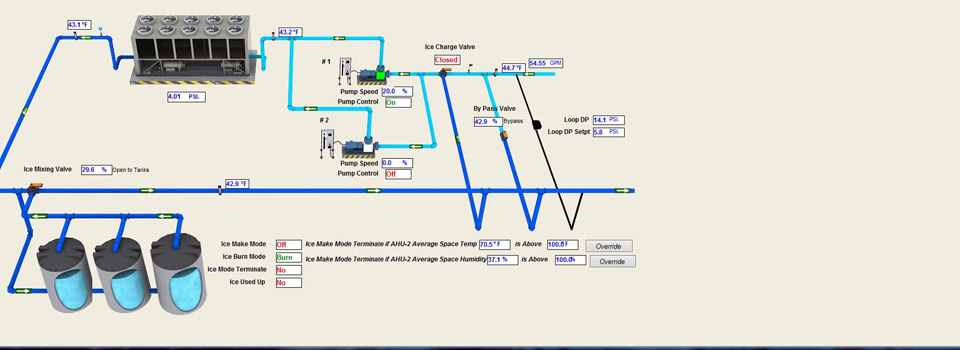Engineering services are provided by the Office of the University Engineer. These include a wide variety of services from energy management to code compliance and minor construction management.
Energy Management
The university monitors electrical consumption in twenty-one (21) various academic, dormitory, and apartment buildings. We are able to manage the air-conditioning systems in ten (10) buildings through a building energy management system, which gives us the ability to set temperatures throughout the day. We program automatic setback temperatures during nights, weekends, and school breaks to increase our energy savings and most importantly reduce our contribution of greenhouse gasses and other emissions to the environment. We continue to look at areas across campus to identify locations where it makes good sense to install occupancy sensors for turning lights off when not needed along with the usage of LED lighting to further reduce electrical demand.
Code Compliance
The university has a responsibility to ensure the health and safety of our students, faculty, staff, and visitors. To this end we maintain several permits to demonstrate our compliance with federal, local and state regulations.
Construction Management
FMS helps to oversee and manage small renovation projects across campus to try and give departments relief when our growth forces changes in how we use our existing spaces. We work with several different contractors to ensure modifications to our buildings are done in compliance with building codes. Our focus is on helping the different departments across campus adjust to changing needs in their areas of instruction.
Did you know you can help us significantly reduce our carbon footprint by:
- Turning off un-necessary lights.
- Set the thermostats in your rooms or apartments between 68 and 70 degrees in the winter, and between 70 and 74 in the summer months.
- Turn your computers, lap tops and other electrical devices off and un-plugged when not actively using or, charging them.
Things Belmont is doing to reduce our impact to the environment:
- Install lighting controls during new construction, as well as, in existing buildings wherever possible.
- The new Ayers Academic Center (AAC, formerly Wedgewood Academic Center) will feature lighting controls that can be managed and will track consumption of lighting loads through a software program. Exterior classrooms will incorporate light harvesting which will allow the lights to ramp down when there is sufficient sunlight coming through the windows and ramp back up when clouds block the light or, the sun goes down at night.
- Offices and classrooms in the Baskin Law School, Ayers Academic Center, and hallways in Dickens / Horrell Halls utilize LED lighting which is one of the most efficient artificial lighting systems on the market today.
- Our newer underground garages utilize LED lighting that automatically sets back to a lower usage function when not needed and, then ramps up as persons or, automobiles approach.
- Air-conditioning systems in nine (9) buildings utilize an energy management system, which gives us the ability to create wide tolerances for temperature ranges as the buildings become un-occupied. This creates a condition where the largest portion of energy consumption can be reduced the greatest.
- The Baskin Law School incorporates a geo-thermal air-conditioning system that significantly reduces the electrical load on the building along with a reduction in the number of pieces of large equipment. The new cafeteria building will also include a geo-thermal system.
- Dickens and Horrell Halls use an air-conditioning system referred to as “Variable Refrigerant Flow” (VRF). These systems have the ability to move heat around the building where it is needed rather than taking it all outside for disposal. This equipment utilizes variable speed motors and fans in a fashion that consumes the absolute least amount of energy possible to do its work. This same system is being included in our most recent dorm/apartment configured residence hall, we affectionately call “Dorm 1C”.
- WAC will be air-conditioned with a system described as a “chilled beam”. This is a system that has chilled water flowing through pipes into each classroom office, or, hallway and then into a device in the ceiling that acts like a radiator. The cold falls from the ceiling register with a little assistance from air handlers plumbed throughout the building. This will be a new technology for Belmont although the principles are not new to the industry. This type system is gaining greater acceptance because the controls industry has reached a point where the potential problems associated with this type air-conditioning can be managed.
Jobs:
To see the latest job openings at Belmont University, go to Jobs.Belmont.edu.

